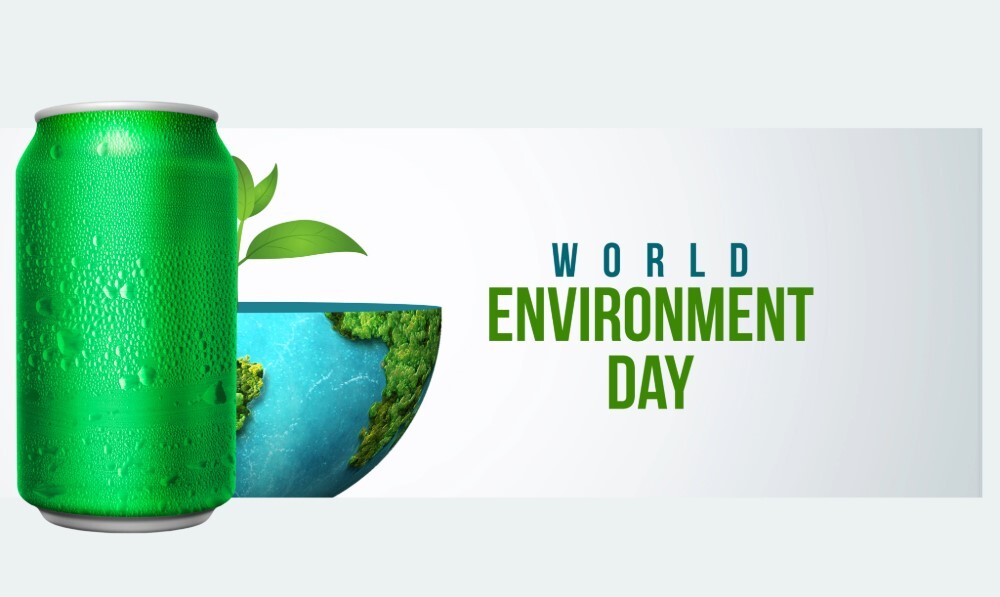

In a world waking up to the urgency of climate action, World Environment Day stands as a global call not just to protect what we have, but to rethink how we build, consume, and innovate. At the heart of this transformation lies a remarkable element - aluminium. Light in weight but mighty in purpose, aluminium is quietly powering the green revolution.

From solar frames that harness the sun, to electric vehicles that glide cleaner and farther, to buildings that breathe efficiency aluminium is the material of endless possibility and zero compromise. What makes it extraordinary? It’s infinitely recyclable retaining its strength and quality no matter how many lives it lives. Talking about recyclability, recycling lies at the very soul of aluminium. Unlike most materials, it can be melted down and reused endlessly saving 95 per cent of the energy and drastically cutting emissions.
From the deep red trails of bauxite residue once seen as a burden to the toxic challenge of spent pot lining, aluminium’s journey is being reimagined through the lens of innovation and circularity. Red mud is now being transformed into construction materials and rare earth recovery streams, while spent pot lining, once hazardous, is being detoxified and repurposed into valuable refractory and cement additives. These aren’t just technical feats they’re a testament to the aluminium industry's commitment to closing the loop, restoring ecosystems, and reclaiming what was once lost.
In a time when the planet can no longer afford linear thinking, aluminium reminds us: what was once discarded can be reborn stronger, cleaner, and smarter. Below is a list of some of such techniques ranging from red mud to spent pot lining used in the aluminium industry.
Bauxite residue treatments – Case Study
Recycling aluminium dross – case studies
Spent Pot Lining recycling technique
Spent Pot Lining (SPL) disposal poses a significant environmental and waste management challenge in the primary aluminium industry due to its hazardous nature, ranking second only to bauxite residue in volume generated during aluminium production. Typically, 18–22 kg of SPL is produced per tonne of aluminium. Through strategic partnerships with cement manufacturers, aluminium producers can transform this waste into a valuable resource, fostering a self-sufficient circular economy. Vedanta Limited has partnered with two leading cement producers in the states of Odisha and Chhattisgarh to co-process the refractory portion of SPL as mixed fines, turning a hazardous by-product into an opportunity for sustainable waste-to-wealth conversion. Co-processing spent pot lining (SPL) in cement production offers a sustainable solution for waste management in the primary aluminium industry. It not only helps substitute primary raw materials in cement manufacturing but also addresses environmental concerns through industrial symbiosis. This approach can be seamlessly integrated into existing cement plants without requiring significant new investments. The high temperatures within cement kilns effectively prevent the formation of hazardous compounds or break them down, while simultaneously incorporating minerals into the cement product. This process eliminates the issue of residual hazardous waste. Using SPL as an alternative fuel in cement production also lowers waste handling expenses and reduces overall cement manufacturing costs. By enabling resource recovery and reducing environmental impact, co-processing SPL contributes significantly to the principles of a circular economy and zero waste in the aluminium industry.
Conclusion
Aluminium is much more than a versatile metal it’s a powerful catalyst for sustainable innovation and circular economy transformation. As the world embraces urgent climate action, aluminium’s unique recyclability and the industry’s groundbreaking efforts to repurpose waste streams like red mud, dross, and spent pot lining prove that what was once discarded can be reborn into valuable resources. These pioneering solutions not only reduce environmental impact but also redefine how industries can thrive while protecting our planet. In this new era, aluminium stands as a shining example that sustainability and progress can go hand in hand building a cleaner, smarter future for all.
Responses








